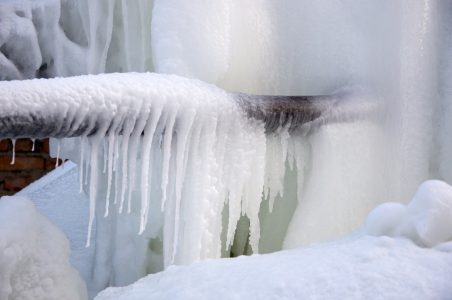Key Methods for Avoiding Frozen Pipes in Cold Weather
Key Methods for Avoiding Frozen Pipes in Cold Weather
Blog Article
What're your concepts about How to prepare your home plumbing for winter weather?

Winter can damage your pipes, especially by freezing pipes. Here's exactly how to prevent it from occurring and what to do if it does.
Intro
As temperatures decline, the danger of frozen pipelines increases, potentially bring about expensive fixings and water damage. Comprehending exactly how to stop frozen pipes is crucial for house owners in cool climates.
Comprehending Icy Pipes
What triggers pipelines to freeze?
Pipes ice up when revealed to temperatures below 32 ° F (0 ° C) for prolonged periods. As water inside the pipes ices up, it expands, putting pressure on the pipe walls and potentially causing them to burst.
Risks and problems
Frozen pipelines can bring about supply of water interruptions, property damages, and costly repair services. Burst pipes can flooding homes and trigger extensive architectural damages.
Indications of Frozen Pipes
Recognizing icy pipes early can stop them from bursting.
Exactly how to determine icy pipes
Seek reduced water circulation from taps, uncommon odors or sounds from pipes, and noticeable frost on subjected pipes.
Avoidance Tips
Insulating vulnerable pipelines
Wrap pipes in insulation sleeves or utilize heat tape to protect them from freezing temperature levels. Concentrate on pipes in unheated or outside areas of the home.
Heating strategies
Maintain interior spaces sufficiently warmed, specifically areas with plumbing. Open cabinet doors to enable warm air to distribute around pipes under sinks.
Securing Exterior Pipes
Yard pipes and outside faucets
Detach and drain garden hoses before wintertime. Set up frost-proof spigots or cover outdoor taps with insulated caps.
What to Do If Your Pipelines Freeze
Immediate activities to take
If you presume frozen pipes, keep faucets open up to soothe stress as the ice melts. Use a hairdryer or towels taken in hot water to thaw pipes gradually.
Long-Term Solutions
Structural changes
Think about rerouting pipes away from outside walls or unheated areas. Include extra insulation to attic rooms, cellars, and crawl spaces.
Upgrading insulation
Purchase premium insulation for pipelines, attics, and wall surfaces. Correct insulation helps preserve regular temperatures and lowers the risk of frozen pipelines.
Verdict
Avoiding icy pipelines needs aggressive procedures and quick responses. By understanding the reasons, signs, and safety nets, home owners can shield their pipes during cold weather.
6 Proven Ways to Prevent Frozen Pipes and Protect Your Home
Disconnect and Drain Garden Hoses
Before winter arrives, start by disconnecting your garden hoses and draining any remaining water. Close the shut-off valves that supply outdoor hose bibs and leave the outdoor faucet open to allow any residual water to drain. For extra protection, consider using faucet covers throughout the colder months. It’s also important to drain water from any sprinkler supply lines following the manufacturer’s directions.
Insulate Exposed Pipes
Insulating your pipes is an effective way to prevent freezing. Pipe insulation is readily available at home improvement stores and is relatively inexpensive. Pay close attention to pipes in unheated areas such as the attic, basement, crawl spaces, or garage. Apply foam insulation generously to create a buffer against the cold. You can also wrap your pipes in heat tape or thermostat-controlled heat cables for added warmth.
Seal Air Leaks
Inspect your home for any cracks or openings that could let in cold air. Seal any holes around the piping in interior or exterior walls, as well as the sill plates where your home rests on its foundation. Additionally, make sure to keep your garage door closed unless you’re entering or exiting. Leaving it open creates a significant air leak that can lead to frozen pipes.
Allow Warm Air Circulation
During cold snaps, it’s essential to allow warm air to circulate evenly throughout your home. Leave interior doors ajar to promote better airflow. Open kitchen and bathroom cabinets to help distribute heat consistently around the rooms. If you have small children or pets, be sure to remove any household chemicals or potentially harmful cleaners from open cabinets for safety.
Let Faucets Drip
A small trickle of water can make a big difference in preventing ice formation inside your pipes. When temperatures drop significantly, start a drip of water from all faucets served by exposed pipes. This continuous flow helps prevent the water from freezing. Additionally, running a few faucets slightly can relieve pressure inside the pipes, reducing the chances of a rupture if the water inside does freeze.
https://choateshvac.com/6-proven-ways-to-prevent-frozen-pipes-and-protect-your-home/

I ran across that review about Preventing and dealing with frozen pipes when doing a lookup on the internet. Sharing is good. You never know, you could be doing someone a favor. Thanks for taking the time to read it.
Request Your Service Report this page